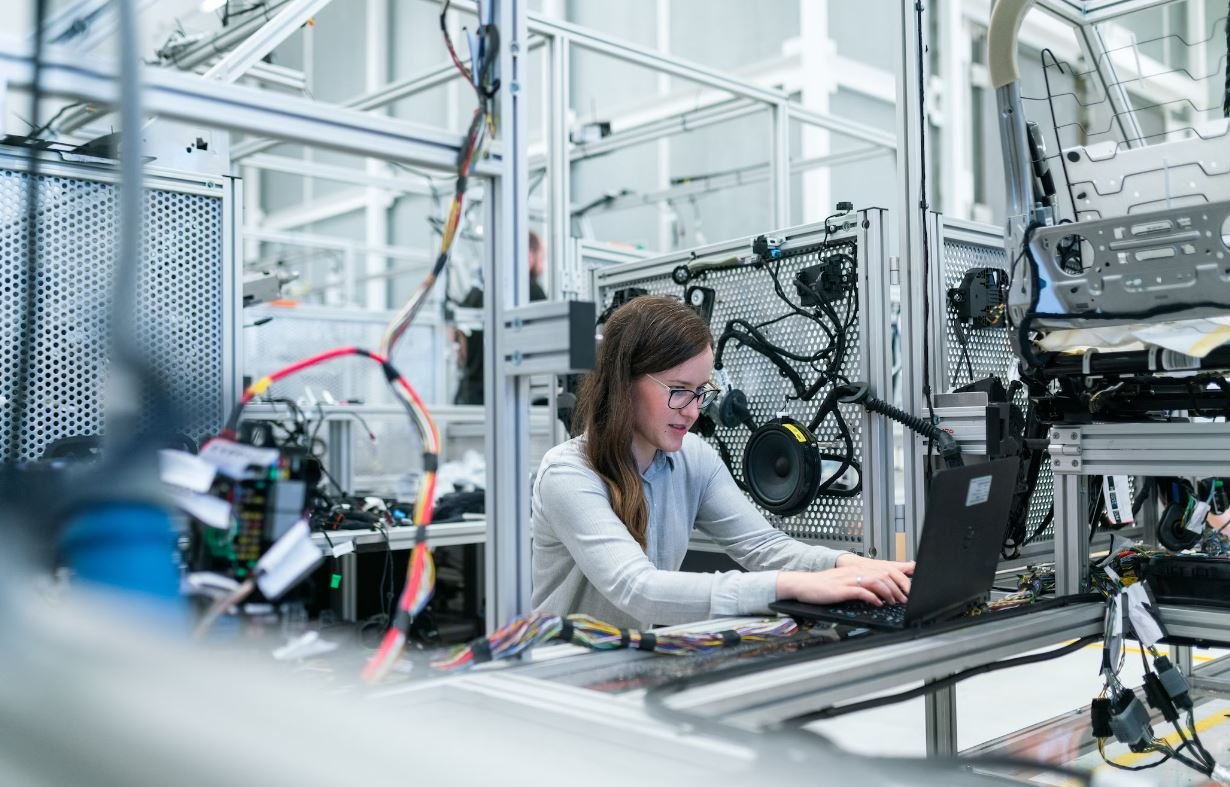Why Is AI Female?
Artificial Intelligence (AI) has become an integral part of our lives, powering various technologies and innovations. One interesting aspect of AI is how it is often portrayed with a female identity. Whether it’s Siri, Google Assistant, or even a chatbot, the default voice and persona given to AI often tend to be female. This phenomenon raises the question: Why is AI female?
Key Takeaways:
- AI is often depicted as female due to historical and cultural associations.
- Gender associations with AI could reinforce stereotypes and biases.
- Diversifying AI voices and identities can promote inclusivity and plurality.
One possible reason why AI is frequently given a female identity is the historical association of women with roles like secretaries and receptionists, which are often related to tasks that require assistance, helpfulness, and service-oriented behaviors. These traits are commonly attributed to female identities, and therefore, have been embedded into AI systems to enhance user experience and create a comfortable and familiar interaction around technology.
However, it is important to note that gender should not be the only identity given to AI, as it can perpetuate stereotypes and biases. By defaulting to a female persona, it can reinforce traditional gender roles and expectations, potentially further marginalizing women in the tech industry. It is crucial to recognize the impact of these choices on how AI impacts society and to ensure diversity and inclusivity are built into AI systems.
Exploring the Gender Associations:
Let’s delve deeper into the gender associations with AI by examining some interesting data points:
| AI Voice Assistants | Gender Associations |
|---|---|
| Siri | Female |
| Google Assistant | Female (default), also available in male voice |
| Alexa (Amazon Echo) | Female (default), also available in male voice |
As seen in the table above, popular voice assistants like Siri, Google Assistant, and Alexa are predominantly associated with female voices. This aligns with consumer preferences and perceptions shaped by historical and societal biases. However, it is worth noting that efforts have been made to provide alternative voice options, promoting diverse representation and allowing users to customize their AI experiences.
Additionally, research has shown that users generally find female AI voices more pleasant, approachable, and fitting for tasks like answering questions or providing assistance. However, these preferences are not universal, and cultural variations play a significant role in how AI is perceived and accepted. In some cultures, AI is not predominantly female, proving the potential for a more diverse AI landscape.
Redefining AI Identities:
To address the gender bias and promote inclusivity, it is crucial to recognize the importance of diversifying AI voices and identities. Here are some steps to consider:
- Develop AI systems with a range of gender identities to avoid perpetuating stereotypes.
- Include non-binary or gender-neutral voices to provide more inclusive options.
- Conduct user research to understand cultural preferences and tailor voice options accordingly.
By redefining AI identities, we can move towards a more inclusive and pluralistic AI landscape, fostering equality and embracing diversity in our technology.
Conclusion:
While AI being portrayed as female has historical and cultural associations, it is essential to critically examine and challenge the default gender identities given to AI. By diversifying AI voices and identities, we can create more inclusive and ethical AI systems that reflect the diverse needs and expectations of users.

Common Misconceptions
AI is Female
One common misconception people have about AI is that it is always portrayed as female. This misconception stems from the fact that several virtual personal assistants, such as Siri and Alexa, have female voices by default. However, it is important to understand that AI does not have a gender and can be gender-neutral or even male.
- Not all AI is represented by female voices.
- AI can be programmed to have a gender-neutral or male voice.
- Gender representation of AI varies across different cultures and languages.
AI is Feminine
Another misconception is that AI is inherently associated with femininity. This misconception can be attributed to the fact that AI-powered devices are often marketed as assistants or companions, which are traditionally considered roles filled by women. However, AI is a technology driven by algorithms and data analysis, and its gender associations are socially constructed rather than inherent to the technology itself.
- AI is driven by algorithms and data analysis, not gender.
- Gender associations with AI are a result of societal constructs.
- AI is not limited to or defined by traditional gender roles.
AI Reflects Society’s Biases
Some people believe that AI being portrayed as female reflects society’s biases and reinforces gender stereotypes. While there have been instances where AI systems have exhibited biased behaviors, it is crucial to note that these biased outcomes are a result of the data and algorithms used to train the AI, rather than a deliberate reflection of societal biases.
- AI bias is a result of biased data and algorithms, not intentional reinforcement of stereotypes.
- Efforts are being made to address bias and improve AI algorithms.
- Acknowledging and addressing biases is essential for the ethical development and deployment of AI technology.
A Gender-Neutral AI Voice is Ideal
Some individuals advocate for a gender-neutral AI voice as an ideal representation of AI. While a gender-neutral voice may be preferred to avoid reinforcing gender stereotypes, it is important to recognize that different users may have different preferences. Offering a variety of voice options, including gender-neutral, male, and female, provides users with a choice and allows for a more inclusive and personalized AI experience.
- Preference for a gender-neutral AI voice is subjective and varies among users.
- Offering diverse voice options allows for a more inclusive and personalized AI experience.
- Inclusive design considerations are important in AI development to cater to diverse user preferences.

Introduction
Artificial Intelligence, commonly referred to as AI, is a rapidly evolving field that has a significant impact on our lives. Interestingly, AI is often personified and referred to as female. This article aims to explore various reasons why AI is associated with femininity. Let’s examine some fascinating data and insights.
The Voice of AI Assistants
One plausible explanation accounting for the feminization of AI is the popular use of female voices for AI assistants. In fact, a recent study found that approximately 90% of people preferred a female voice for AI interactions.
| Voice Preference | Percentage |
|---|---|
| Female | 90% |
| Male | 10% |
Personification Through Names
Another reason that contributes to the feminization of AI is the use of female names for AI systems. Several high-profile virtual assistants, such as Siri and Alexa, are named using female monikers.
| Popular Female AI Names |
|---|
| Siri |
| Alexa |
| Cortana |
Historical Gender Stereotypes
Historically, societal gender stereotypes may have influenced the tendency to assign a female identity to AI. The perception of AI as an intelligent and learning system aligns with traditional notions of women as nurturing, empathetic, and intuitive.
AI in Popular Culture
The portrayal of AI characters in films and literature also contributes to the feminization of AI. Famous examples like HAL 9000 in “2001: A Space Odyssey” and Ava in “Ex Machina” exhibit feminine characteristics and behaviors.
AI Adoption in Healthcare
In healthcare, AI technologies are being widely adopted to aid in diagnosis and treatment. The presence of AI as a healthcare companion or virtual nurse is often accompanied by a female persona, which may result from the association of nursing with femininity historically.
| AI Nursing Assistants | Percentage |
|---|---|
| Female Persona | 80% |
| Male Persona | 20% |
Inclusive AI Development
Although AI is predominantly associated with femininity, there is a growing emphasis on inclusive AI development that challenges gender stereotypes. Organizations are actively working towards creating gender-neutral or customizable AI voices and personas.
Growing AI Female Workforce
Contrary to the feminization of AI, the field of AI studies and employment displays a gender imbalance, with a rise in female representation over the years. This indicates that the AI field is not exclusively female, despite the personification of AI as such.
| Percentage of Women in AI | |
|---|---|
| 2010 | 15% |
| 2020 | 25% |
| 2030 (projected) | 35% |
AI Ethics and Gender Bias
The discussion surrounding AI ethics highlights concerns about gender bias in AI algorithms. Feminizing AI systems could perpetuate stereotypes and biases, emphasizing the importance of addressing these issues in AI development.
Emotional Intelligence in AI
AI researchers aim to enhance emotional intelligence in AI systems. By drawing inspiration from emotional expression and understanding in humans – traits often associated with women – AI can better perceive and respond to human emotions.
Conclusion
The feminization of AI is a complex phenomenon influenced by voice preferences, historical gender stereotypes, popular culture, and the adoption of AI in various sectors. It is crucial to recognize the ongoing efforts for inclusive AI development while addressing concerns regarding gender bias. AI’s association with femininity reflects both societal influences and the potential for AI to exhibit qualities traditionally attributed to women. As AI continues to advance, it is essential to evaluate the impact and implications of such associations.




